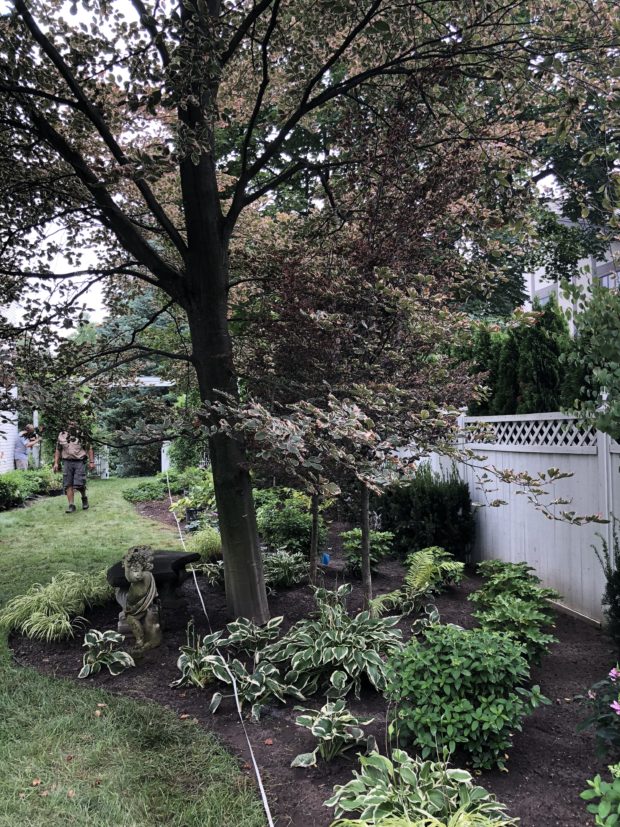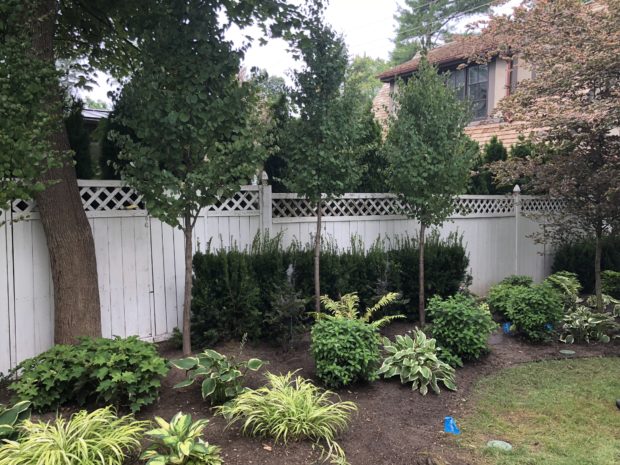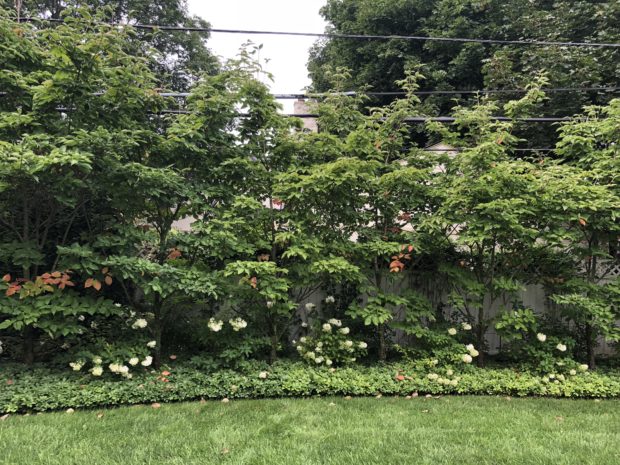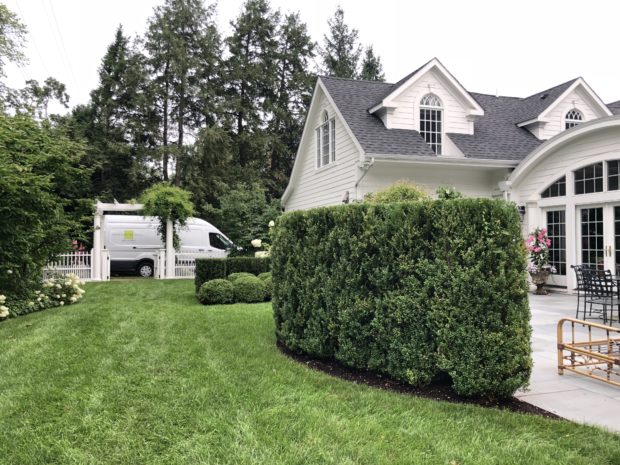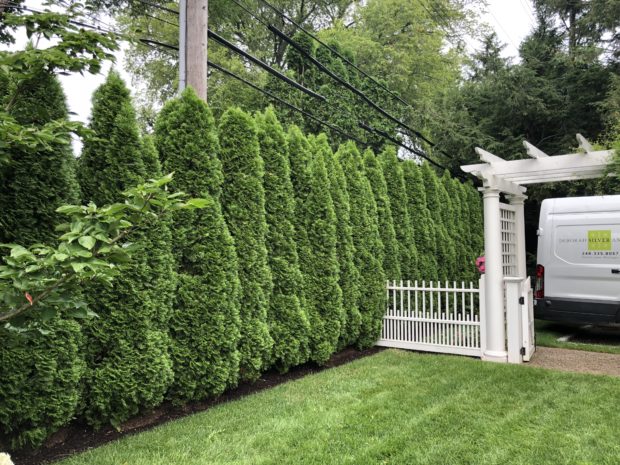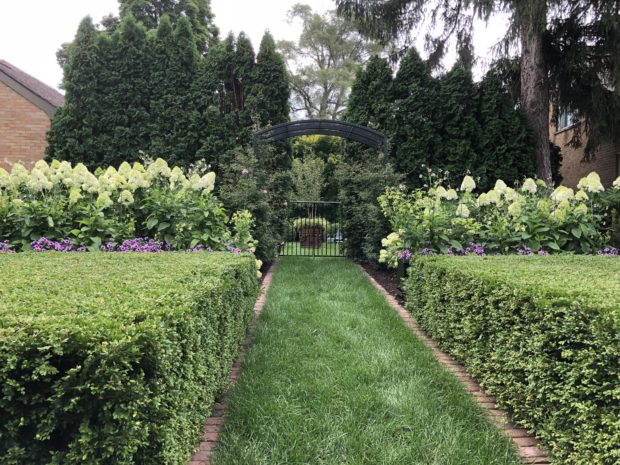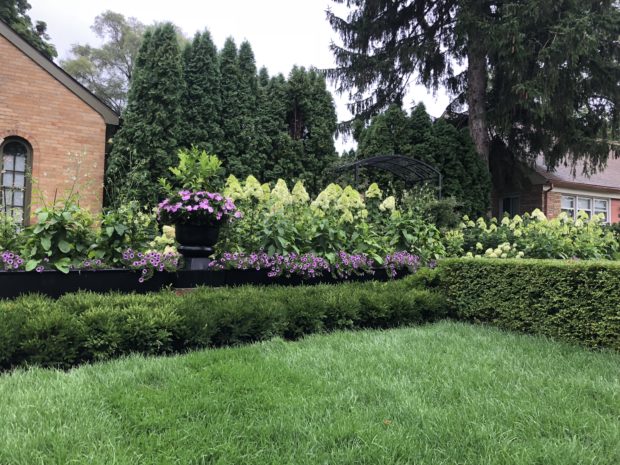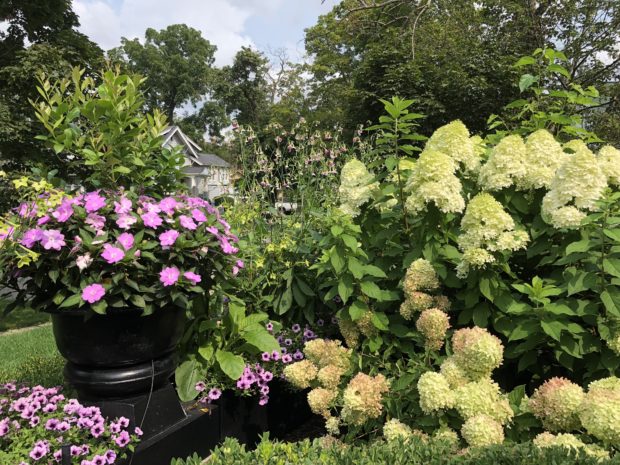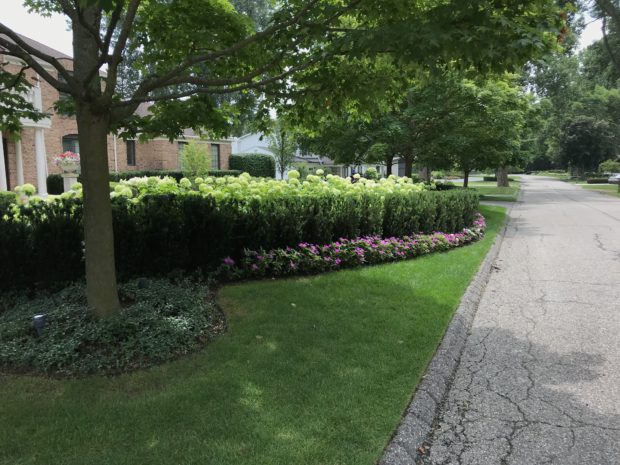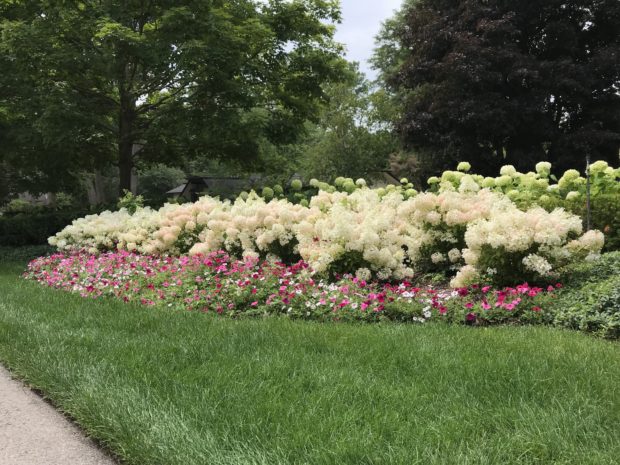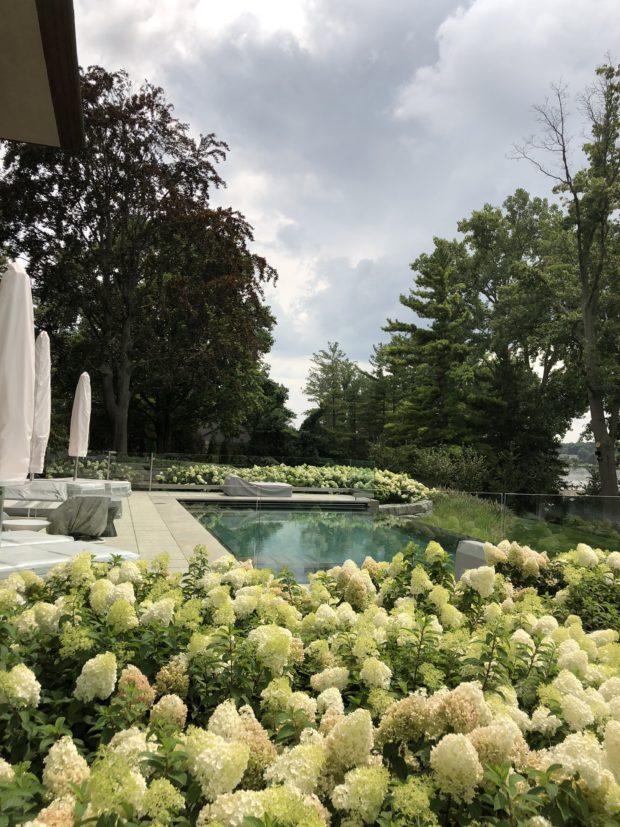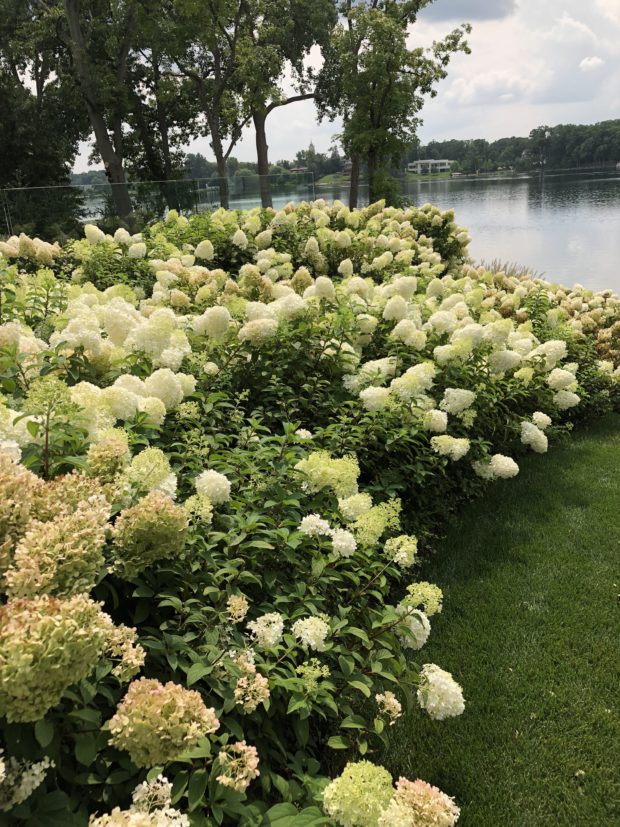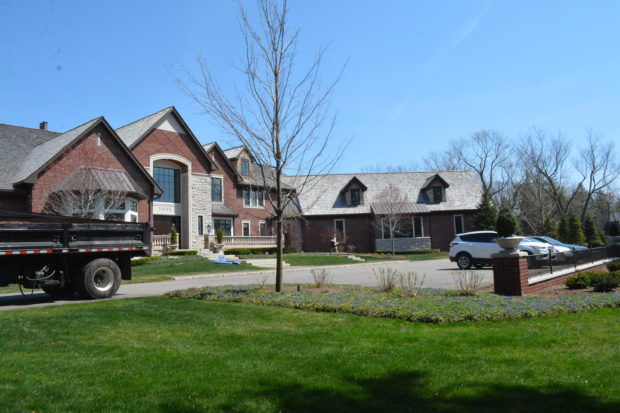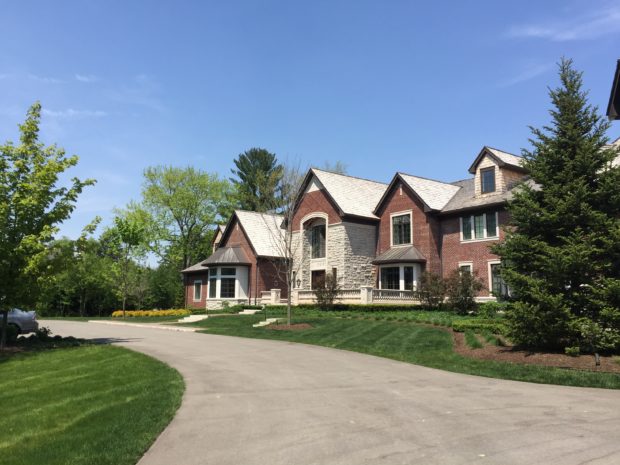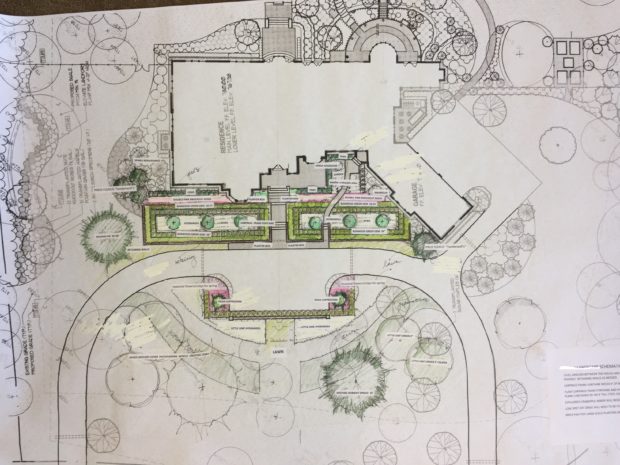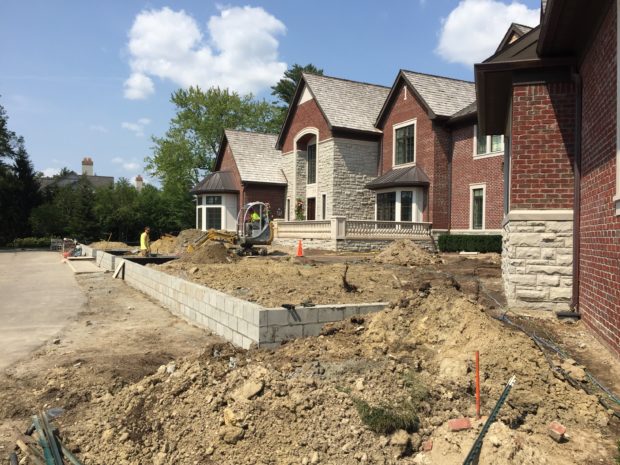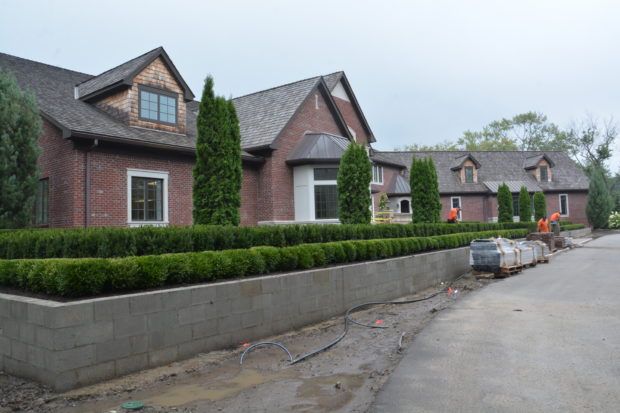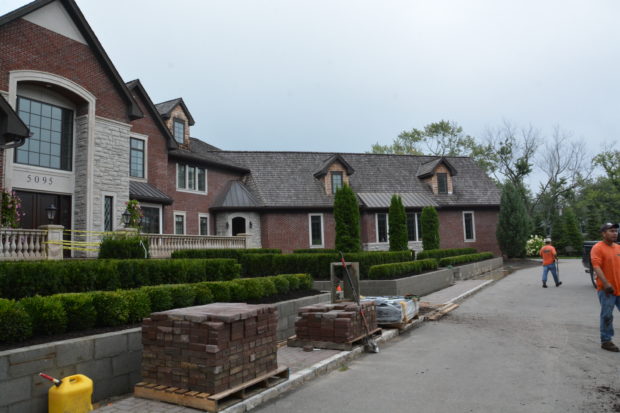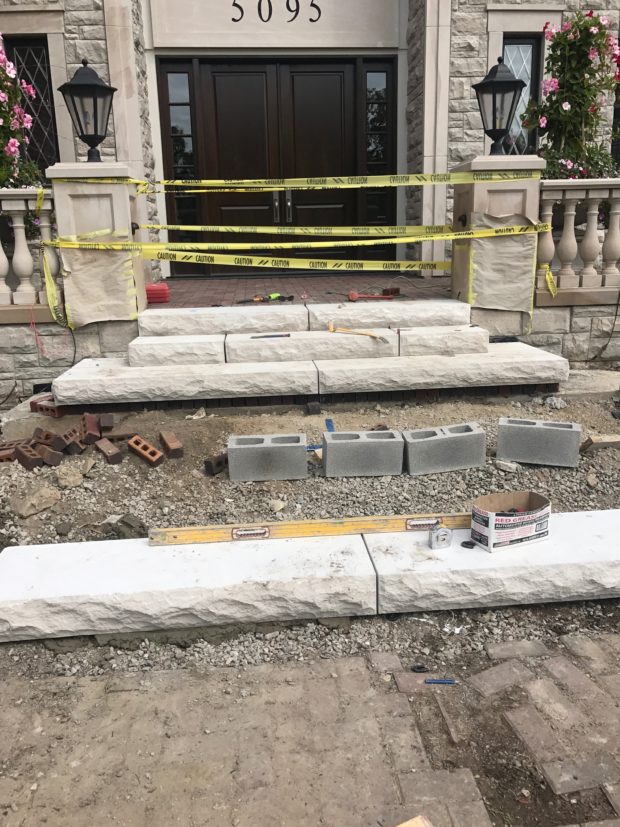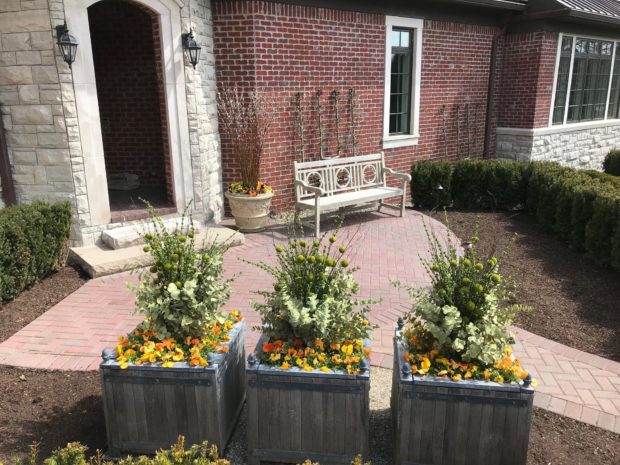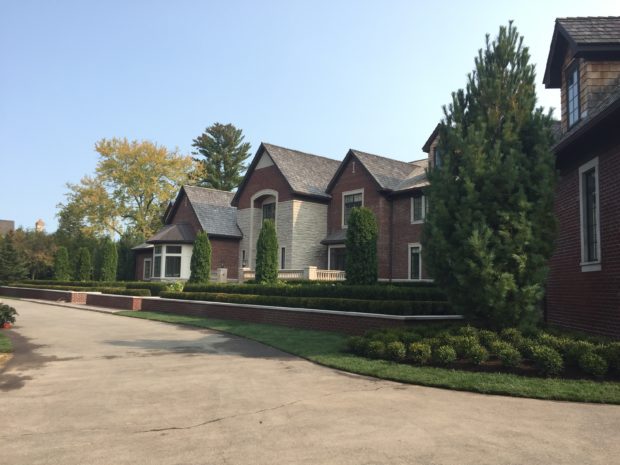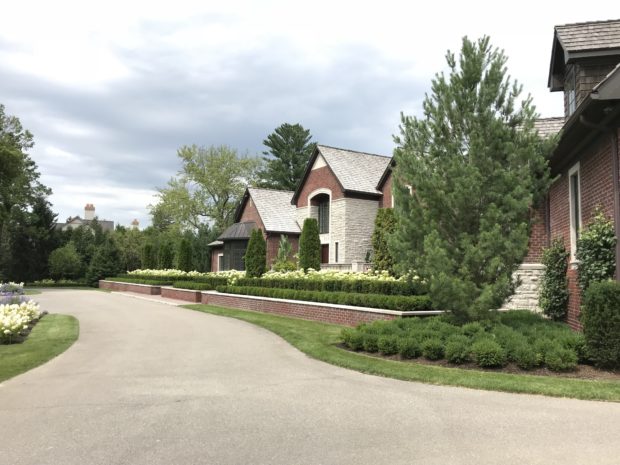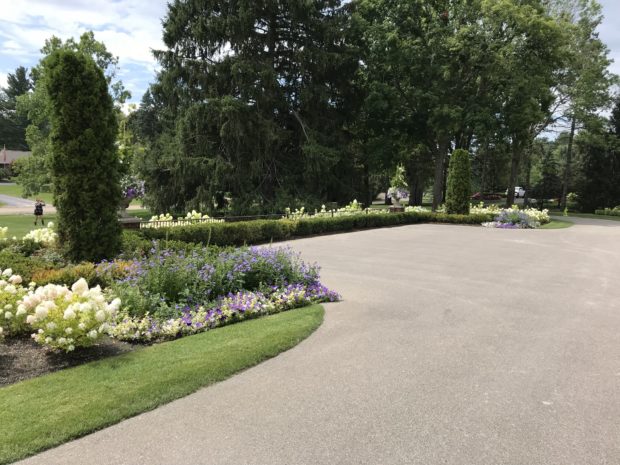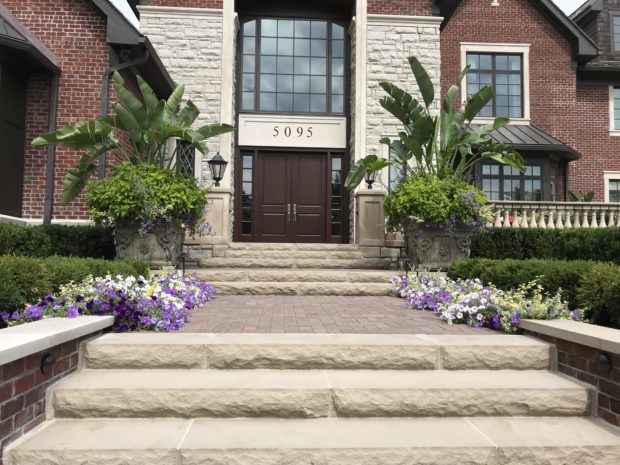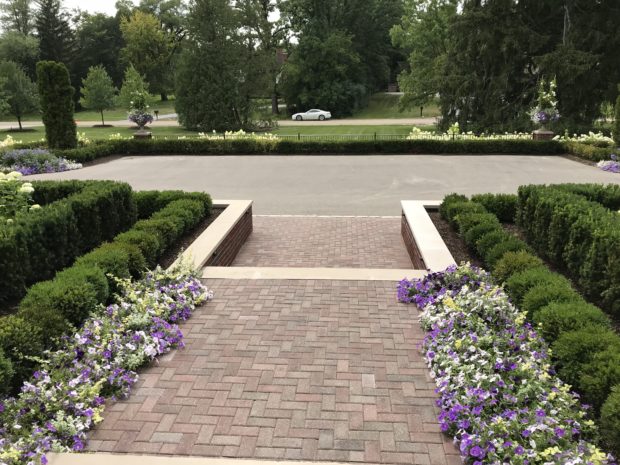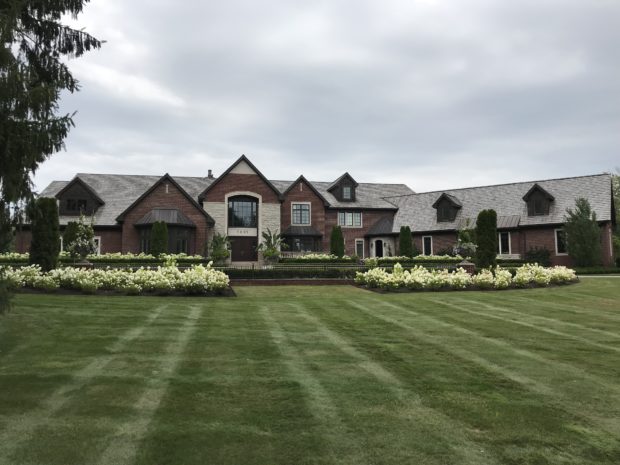 Picture this, from fifteen years ago. Nicole and Ross had a mass planting of yews original to their house right up against the foundation of the right side of the house, and enclosing the front porch. They had gotten large and leggy, as yews frequently do. The house has a distinctively low and wide profile that was overwhelmed by all those yews. The house could barely breathe. The only other landscape elements existing were trees-a large gleditsia, or honey locust, and a very large and imposing American elm.
Picture this, from fifteen years ago. Nicole and Ross had a mass planting of yews original to their house right up against the foundation of the right side of the house, and enclosing the front porch. They had gotten large and leggy, as yews frequently do. The house has a distinctively low and wide profile that was overwhelmed by all those yews. The house could barely breathe. The only other landscape elements existing were trees-a large gleditsia, or honey locust, and a very large and imposing American elm.
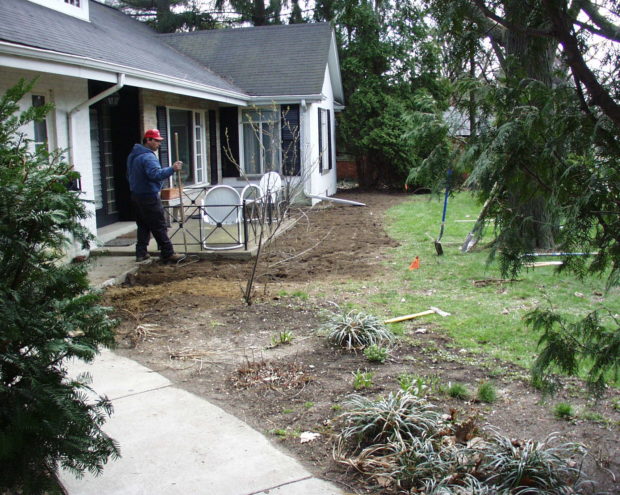 I told them we could move the yews away from the front porch and foundation, and plant them in a spot that would provide a little privacy from to their front porch and door without looming over them. I couldn’t wait to dig them out and move them. We also removed the concrete sidewalk that came from the drive, and ran along the near foundation to the front porch. We closed off that side entrance to the front door by moving one of the iron panels from the center front of the porch to the side. I envisioned a new walkway that would lead visitors to the middle front of the porch, placing them face to face with the front door.
I told them we could move the yews away from the front porch and foundation, and plant them in a spot that would provide a little privacy from to their front porch and door without looming over them. I couldn’t wait to dig them out and move them. We also removed the concrete sidewalk that came from the drive, and ran along the near foundation to the front porch. We closed off that side entrance to the front door by moving one of the iron panels from the center front of the porch to the side. I envisioned a new walkway that would lead visitors to the middle front of the porch, placing them face to face with the front door.
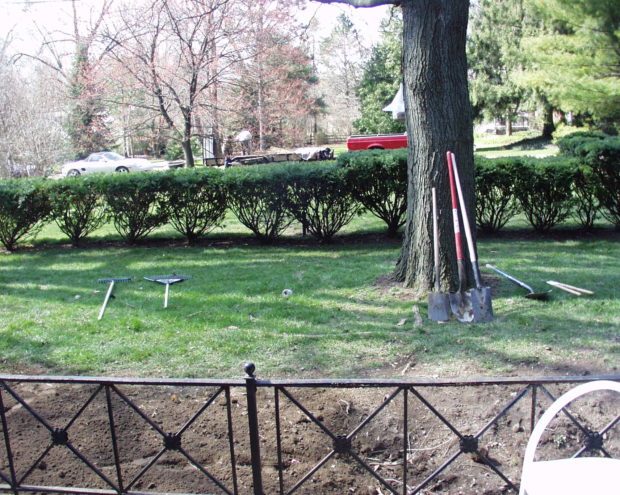 There would be some private space in front of the porch. The trunk of the big honey locust would provide a sculptural element.
There would be some private space in front of the porch. The trunk of the big honey locust would provide a sculptural element.
 The front yard was a large grassy area completely open to the street. Those yews were all different sizes and heights, but we hoped to groom and prune them to encourage them to grow better at the ground level in the future. In an effort to speed up the process, we installed parallel row of new and smaller yews on the inside, to hide the bare legs you see in the picture above. We planted boxwood next to the foundation of the house. This smaller growing evergreen would not overpower their low slung house or windows. Foundation plantings need to be respectful of the architecture that sits on that foundation. A landscape should feature the most prominent feature, not engulf it. The location of these yews had everything to do with a capped pipe sticking up out of the grass – flagged in the above picture. It could not be moved or removed, so we landscaped to disguise it.
The front yard was a large grassy area completely open to the street. Those yews were all different sizes and heights, but we hoped to groom and prune them to encourage them to grow better at the ground level in the future. In an effort to speed up the process, we installed parallel row of new and smaller yews on the inside, to hide the bare legs you see in the picture above. We planted boxwood next to the foundation of the house. This smaller growing evergreen would not overpower their low slung house or windows. Foundation plantings need to be respectful of the architecture that sits on that foundation. A landscape should feature the most prominent feature, not engulf it. The location of these yews had everything to do with a capped pipe sticking up out of the grass – flagged in the above picture. It could not be moved or removed, so we landscaped to disguise it.
 At the end of this renovation, we installed a stone walkway with concrete tiles, running in front of an old cedar adjacent to the drive. I placed and planted a fern leaf beech in the lawn, and a tricolor beech to the right of the picture window. It did not seem like much at the time, but growing time would favor what had been done.
At the end of this renovation, we installed a stone walkway with concrete tiles, running in front of an old cedar adjacent to the drive. I placed and planted a fern leaf beech in the lawn, and a tricolor beech to the right of the picture window. It did not seem like much at the time, but growing time would favor what had been done.
 A month ago they called. Everything had grown a lot, and some things not so much-could I come and take a look. The boxwood had grown so much that the stone path to the front door looked and functioned more like bed edging. The big honey locust had gotten a lot bigger, meaning that moss had all but overtaken the grass and the stone landing in front of the porch. The tricolor beech had grown in handsomely.
A month ago they called. Everything had grown a lot, and some things not so much-could I come and take a look. The boxwood had grown so much that the stone path to the front door looked and functioned more like bed edging. The big honey locust had gotten a lot bigger, meaning that moss had all but overtaken the grass and the stone landing in front of the porch. The tricolor beech had grown in handsomely.
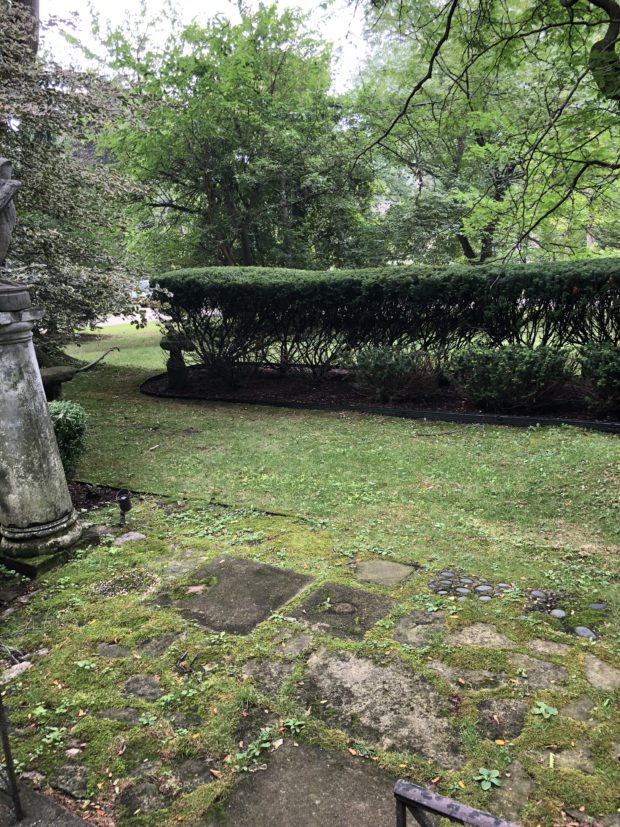 The interior row of smaller yews had not fared so well. The shade from the locust, beech, and the old yews had about done them in. Even though the original yews were as leggy as ever, they now completely blocked the view of the front yard.
The interior row of smaller yews had not fared so well. The shade from the locust, beech, and the old yews had about done them in. Even though the original yews were as leggy as ever, they now completely blocked the view of the front yard.
 The American elm is now of enormous size. It must be better than 80 feet tall, and the canopy casts an enormous amount of shade in all directions. To the left in this picture, a white pine that had also grown out over the lawn. Behind the white pine, a huge branch of the honey locust hanging over the yews.
The American elm is now of enormous size. It must be better than 80 feet tall, and the canopy casts an enormous amount of shade in all directions. To the left in this picture, a white pine that had also grown out over the lawn. Behind the white pine, a huge branch of the honey locust hanging over the yews.
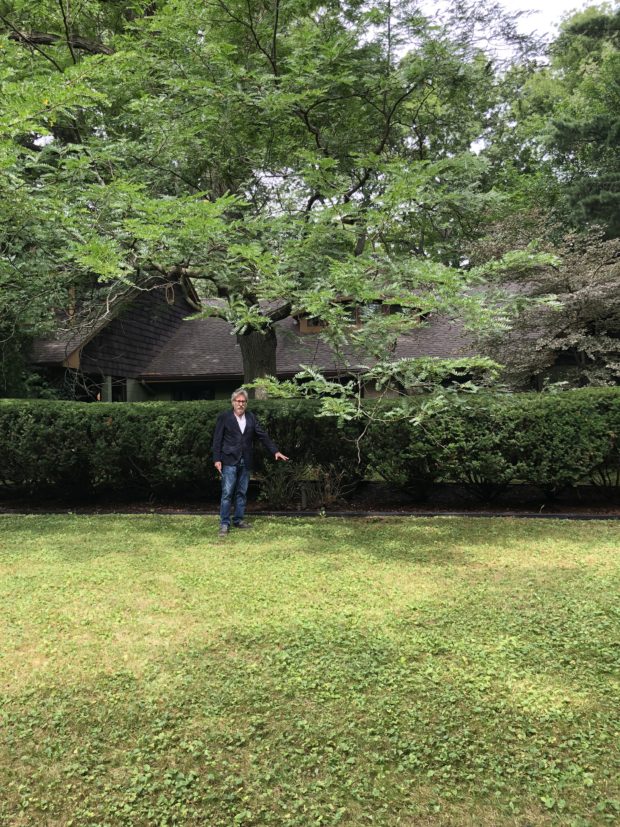 The south face of the yews was more than decent, as it had much better light. They had grown several feet taller, and they did a great job of screening the pipe.
The south face of the yews was more than decent, as it had much better light. They had grown several feet taller, and they did a great job of screening the pipe.
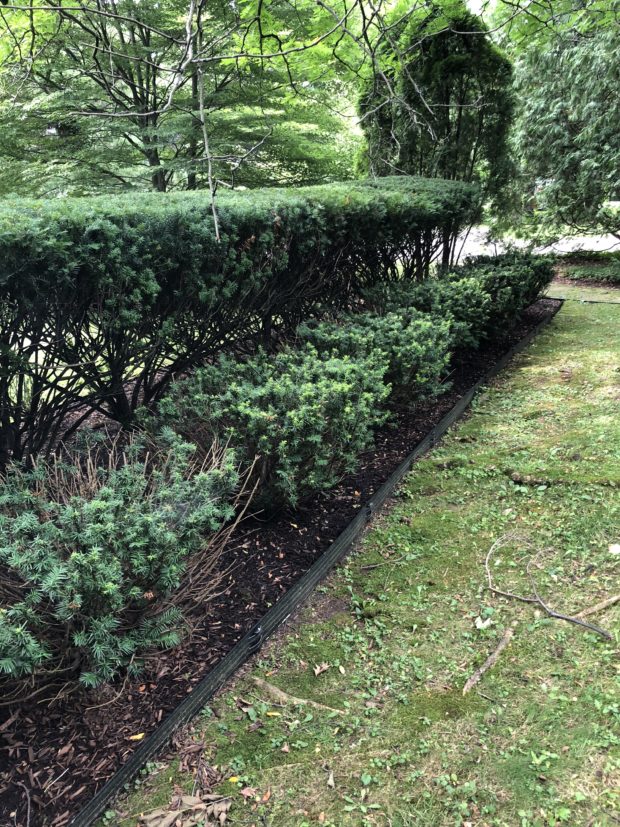 But the house side view presented a much bleaker picture.Yews are amazingly shade tolerant, but there is a limit to what they can take. A number of the smaller ones had been pruned, or browsed to death by deer. The arborvitae at the end of the yews was in much the same shape-too much shade for too long had taken its toll. It was too big and in too poor a shape to make it worthwhile to move.
But the house side view presented a much bleaker picture.Yews are amazingly shade tolerant, but there is a limit to what they can take. A number of the smaller ones had been pruned, or browsed to death by deer. The arborvitae at the end of the yews was in much the same shape-too much shade for too long had taken its toll. It was too big and in too poor a shape to make it worthwhile to move.
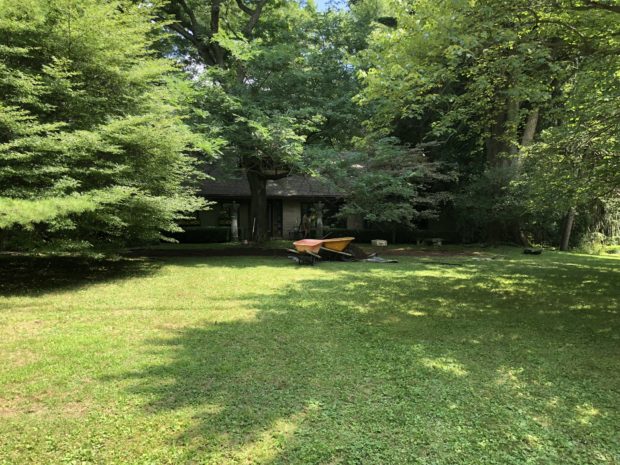 It did not take long to get those yews out. Nor did it appear that something was missing from the landscape. The shade has become a major element of the landscape. The trees and the shade-atmospheric.
It did not take long to get those yews out. Nor did it appear that something was missing from the landscape. The shade has become a major element of the landscape. The trees and the shade-atmospheric.
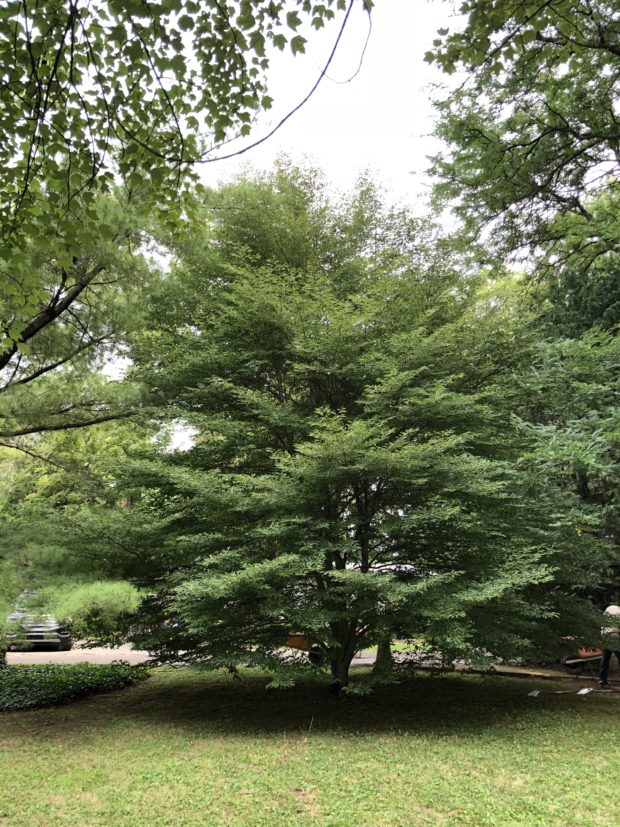 The biggest surprise was the fern leaf beech. That 4 foot tall tree had grown incredibly tall and wide in 15 years. It seemed like the landscape needed little beyond what the beautiful trees were already doing there.
The biggest surprise was the fern leaf beech. That 4 foot tall tree had grown incredibly tall and wide in 15 years. It seemed like the landscape needed little beyond what the beautiful trees were already doing there.
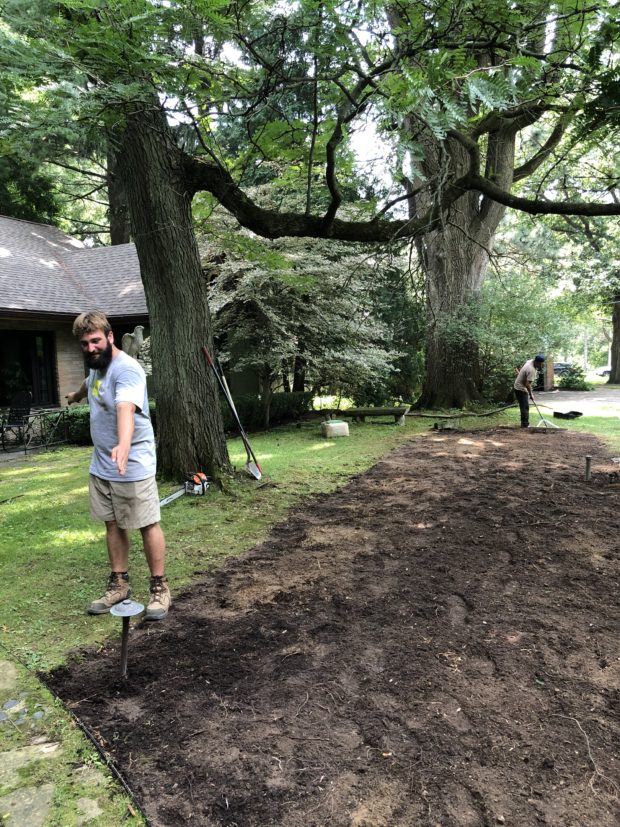 The trees are large enough now to provide some privacy from the road, and frame the view out to the treed lot across the street. There is a long view now from the house, out. We did add enough soil to level the ground, and we seeded the area with a sun-shade grass mix. However, I feel sure that the moss will reclaim the area from the grass in short order.
The trees are large enough now to provide some privacy from the road, and frame the view out to the treed lot across the street. There is a long view now from the house, out. We did add enough soil to level the ground, and we seeded the area with a sun-shade grass mix. However, I feel sure that the moss will reclaim the area from the grass in short order.
 We enlarged the sidewalk by 18″ from the drive to the porch terrace. Once we got close to the locust, we quit digging for a base for the stone. I had no intentions of cutting into the surface roots of the tree. We had some flagstone stockpiled at the landscape yard that was a pretty good match. Once the surface of the stone ages, and the moss fills the gravel joints, it will be difficult to tell that the walk had ever been disturbed.
We enlarged the sidewalk by 18″ from the drive to the porch terrace. Once we got close to the locust, we quit digging for a base for the stone. I had no intentions of cutting into the surface roots of the tree. We had some flagstone stockpiled at the landscape yard that was a pretty good match. Once the surface of the stone ages, and the moss fills the gravel joints, it will be difficult to tell that the walk had ever been disturbed.
 The view from the drive is inviting. The wider walkway makes it possible for two people to walk side by side.
The view from the drive is inviting. The wider walkway makes it possible for two people to walk side by side.
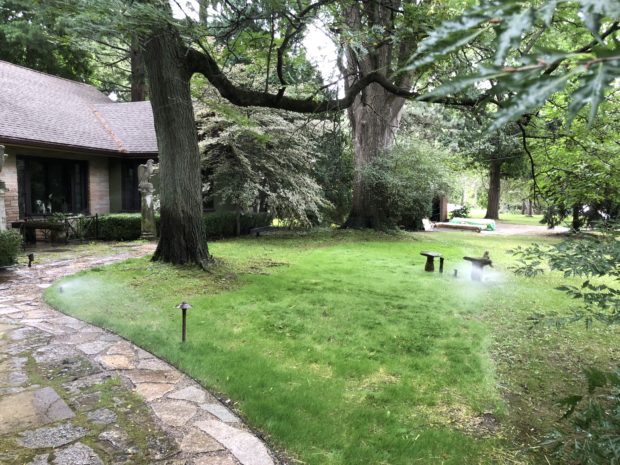 The landscape lights were readily relocated, as were a trio of vintage concrete mushrooms. They have taken on the job of screening the pipe in the grass.The tricolor beech, and a pair of vintage stone ravens on pedestals are beautiful and distinctive.
The landscape lights were readily relocated, as were a trio of vintage concrete mushrooms. They have taken on the job of screening the pipe in the grass.The tricolor beech, and a pair of vintage stone ravens on pedestals are beautiful and distinctive.
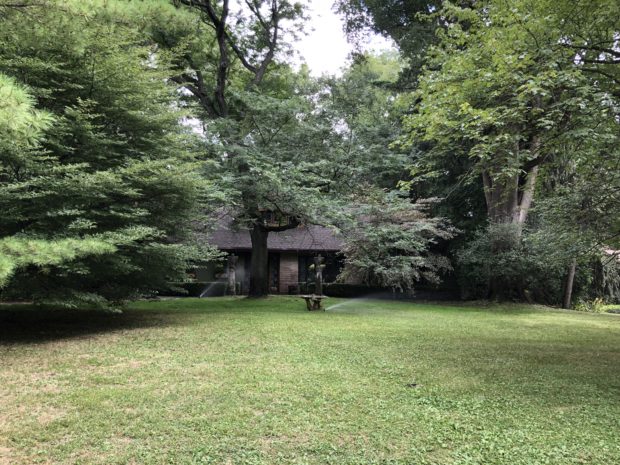 The view from the street will be greatly improved once their arborist comes to cut the dead wood out of the locust, and the suckers from the base of that incredible elm. The lower trunk of that elm is spectacular, and will easily be seen from the walk and the street. I know my clients will continue to take great care of all of their trees. The healthy American elm is ample evidence of that.
The view from the street will be greatly improved once their arborist comes to cut the dead wood out of the locust, and the suckers from the base of that incredible elm. The lower trunk of that elm is spectacular, and will easily be seen from the walk and the street. I know my clients will continue to take great care of all of their trees. The healthy American elm is ample evidence of that.

